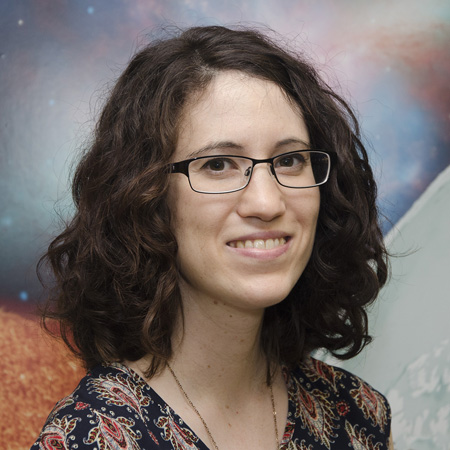 |
|
|
Fall 2017 Alumni Spotlight: Giada Arney
Who are you and when did you graduate from UW? I’m Giada Arney. I graduated from the UW astronomy department and astrobiology program in the summer of 2016. Where are you and what are you working on now? I’m now working at NASA Goddard Spaceflight Center in Maryland. I’m part of the team studying the design of a potential future space telescope called LUVOIR – the Large UV Optical Infrared Telescope. It’s exciting to be part of a team designing a telescope that may someday be able to directly image habitable exoplanets and search for signs of life in their atmospheres! As part of my research, I also run coupled photochemical-climate model simulations to generate self-consistent planetary atmospheres of habitable planets orbiting different types of stars to try to predict what the spectral signs of habitability and life might look like across interstellar distances. How is your current research related to astrobiology? Astrobiology is at the heart of virtually all of my current research. We need to predict what habitable – and inhabited planets! – look like so that we can anticipate the observational requirements for future space telescopes. What is a normal day like in your line of work? Lots of meetings! ;) But in all seriousness, most of them are good meetings since they’re related to planning future space missions, which is so exciting. It still amazes me to think that I’m working at NASA. I have to pinch myself to believe it’s real. I spend a lot of time running computer simulations, helping write documents for the LUVOIR study team, and doing a lot of cat herding of my fellow scientists. Increasingly, I have also been asked to give talks on my research and LUVOIR at various locations in the D.C. area, and I spend a lot of time traveling for conferences and meetings. What did you research in grad school as a UWAB student? I started off working on the least habitable planet of the solar system: Venus! We observed Venus’ nightside, where there are spectral windows that allow thermal radiation to escape from below Venus’ thick cloud deck. I measured the abundances of trace gases below the Venusian cloud deck and made maps of their distribution across the night side. We saw a lot of interesting spatial and temporal variability that varied on nightly timescales. I also simulated early Earth during the Archean geological period (4 – 2.5 billion years ago). Archean Earth may have occasionally have been enshrouded by an orange-colored methane-based haze, which is quite “alien” compared to the planet we live on today, but this planet is still by definition “Earth-like”! We wanted to study hazy early Earth as an analog for what similarly alien exoplanets might be like. So, I ran coupled photochemical-climate model-spectral simulations to predict the environmental conditions of this planet and its observational signatures. It was useful to work on two very different projects in grad school because it gave me a broader set of skills that I would have gained otherwise. I’m grateful to have had this opportunity, and I’m also very grateful to my mentors and advisors who taught me the skills I still use today. In your opinion, what’s one of the most amazing things about astrobiology? Large future space telescopes like LUVOIR could answer the question “Are we alone in the universe?” once and for all during our lifetimes. That’s amazing to me. It’s still early stages, but I think astrobiology helping change the way we do science in general. The interdisciplinary way we conduct research in this field is seems to be growing more widespread in other fields. At NASA Goddard, for example, we are moving towards a model of increasingly interdisciplinary research to tackle topics across a variety of scientific areas unrelated to astrobiology. It’s interesting to watch researchers who aren’t used to this style of research realizing the power of interdisciplinary teams. How has your experience at UWAB prepared you for what you are doing today? Absolutely, I wouldn’t be where I am today if it were not for UWAB! The skills I learned as a researcher doing interdisciplinary science have been invaluable. Anything else you want to add? I love that I get to work with astronomers, geologists, and biologists to tackle questions related to life in the universe! I also love that the public really loves what we astrobiologists do. I’ve given a few public talks since getting to NASA, and the audience is completely fascinated by the same things we scientists are. This is one area of science where you don’t have to work hard to get others excited about it! |
|
